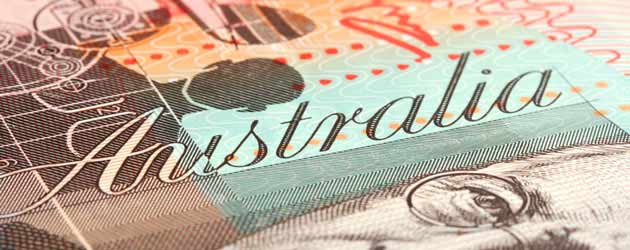
The GBP/AUD exchange rate is forecast to fall beyond the 1.79 level on Tuesday if the latest UK inflation data disappoints the markets. The ‘Aussie’ meanwhile found support after the Reserve Bank of Australia (RBA) reaffirmed its commitment to leaving interest rates steady.
Earlier in the week the Pound Sterling to Australian Dollar (GBPAUD) exchange rate recovered some ground on Monday as demand for riskier assets waned on concerns over the strength of the global economy and geopolitical events.
The Pound Sterling to Australian Dollar (GBP/AUD) exchange rate weakened to its lowest level in two months last week, as Sterling fell sharply against major peers such as the Euro (GBP/EUR) and US Dollar (GBP/USD).
The coming week is likely to see the Sterling remain under pressure as Bank of England Policy Meeting Minutes are forecast to show that policy makers remain hesitant to raise interest rates.
GBP/AUD Exchange Rate Movement Forecast Next Week
On Monday, the Pound to Australian Dollar could experience movement due to the release of the latest UK Rightmove House Prices and Australian Motor Vehicle Sales data.
Aside from those two reports, the session is likely to be muted due to a lack of market moving economic data releases. Industrial Production and Empire State Manufacturing Index data is due to be published in the USA and strong results could increase the US Dollar, which in turn could soften the ‘Aussie’.
Inflation Data Could Influence the Pound to Australian Dollar Exchange Rate
Tuesday promises to be an active day for the GBP/AUD currency pair as economists will be watching the latest UK Inflation Rate data closely. Last week the Pound fell sharply after the Bank of England warned that inflation could fall below 1% over the coming months, so if Tuesday’s data supports that view we could see the Pound fall against most major peers including the US Dollar and Euro.
The Reserve Bank of Australia will also release the minutes of its November policy meeting. If the minutes show that policy makers want the ‘Aussie’ to devalue more or hint that the bank is moving away from its policy of stability the currency is likely to weaken.
Last time around the RBA asserted it would be pursuing a period of interest rate stability.
The central bank stated; ‘Given the information available, the board’s judgement was that the current stance of monetary policy continued to be appropriate for fostering sustainable growth in demand and inflation outcomes consistent with the target over the period ahead.’
The RBA also said of China; ‘some indicators of economic conditions had softened a little. Members were briefed that the Chinese authorities had scope to ease policy if needed to support GDP growth. In the property market, conditions had continued to soften and the government had announced policy changes designed to support the market.’
On Wednesday, the Bank of England releases the minutes of its November policy meeting. Any signs that policy makers are moving further away from voting in favour of raising interest rates will keep the Pound lower.
Thursday will see the release of the latest UK Retail Sales data. Economists are expecting sales to increase by 0.02% on a month on month basis and improve by 3.14% on an annual basis. Strong sales could see the Pound regain some lost ground.
As the week ends, the UK will release Octobers Public Sector Net Borrowing data. The previous months figure showed that, the UK’s public finances made a deficit of £11.07 billion in September; Octobers figure is forecast to show a narrowing of the deficit to £3.7 billion.
The Australian Dollar meanwhile will see movement because of US economic data and a manufacturing report from China, Australia’s largest trading partner.
Meanwhile, the Australian Dollar to New Zealand Dollar exchange rate advanced overnight as the ‘Kiwi’ softened in reaction to comments issued by New Zealand’s Finance Minister Bill English.
When speaking of the New Zealand Dollar’s recent depreciation English asserted; ‘We’re pretty comfortable with the kind of adjustment that we’ve seen. The test is going to be whether it falls further, whether that flows through to some inflation impact in New Zealand.’
The Australian Dollar to New Zealand Dollar (AUD/NZD) exchange rate achieved a high of 1.1079.

